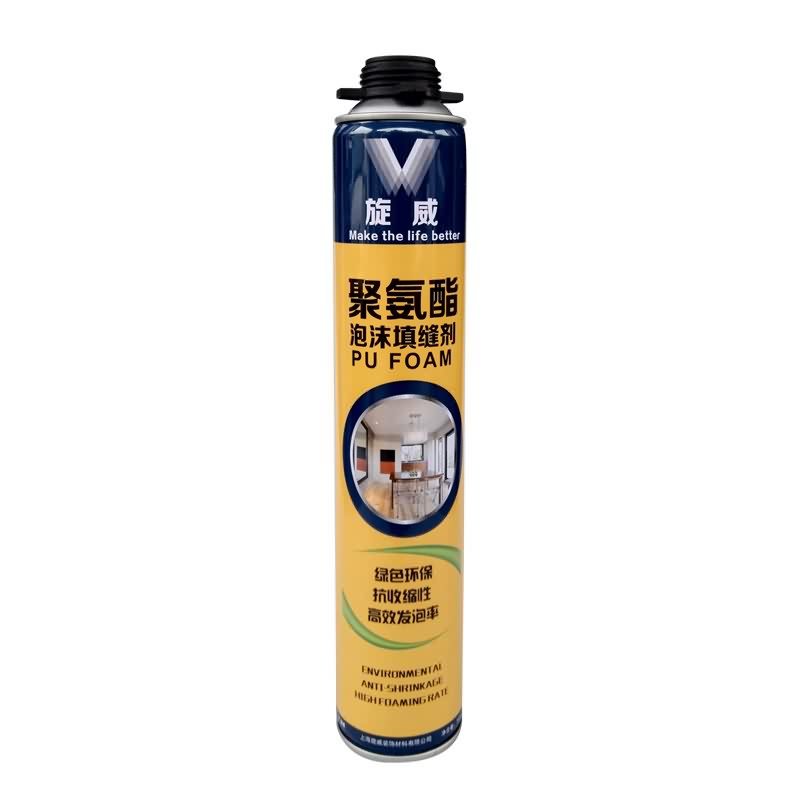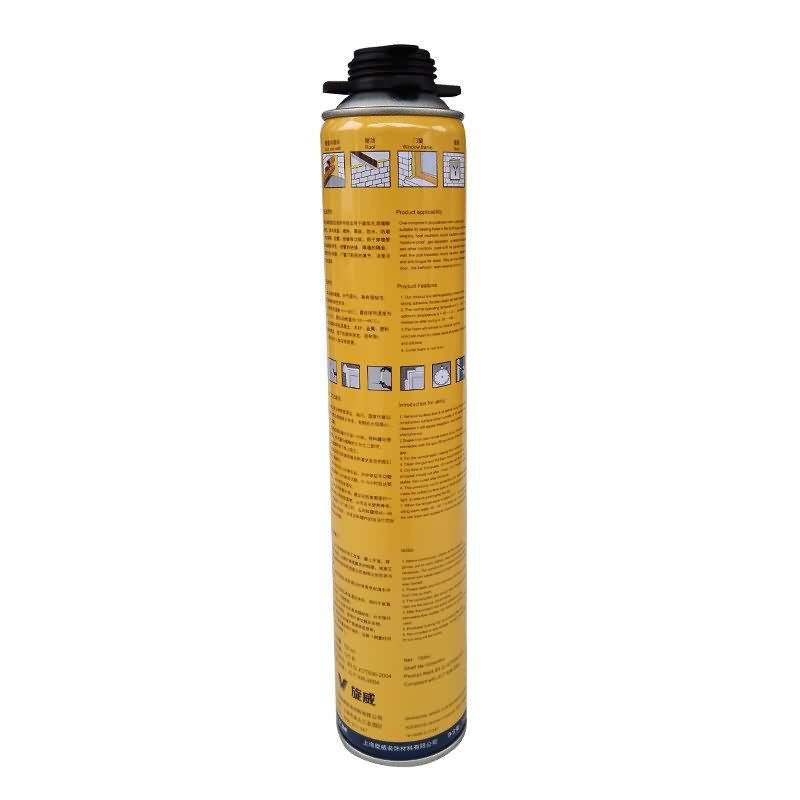Professional High Quality Siway PU FOAM to Czech Republic Manufacturers
Short Description:
Description This product is the expansion, moisture curing, has the strong cohesiveness, elastic foam obturator structure; Save work to save time, reduce waste; High bond strength; Bubble can stick in the concrete, wood, metal, plastic, such as base material surface, but not including teflon, silicon resins; Key Features 1. Noise silencing effect 2. Strong bonding strength 3. Water & weatherproof 4. Primerless adhesion to most building materials Basic Application 1.Doors and Windows a...
We stick to our enterprise spirit of "Quality, Efficiency, Innovation and Integrity". We aim to create more value for our customers with our rich resources, advanced machinery, experienced workers and excellent services for Professional High Quality Siway PU FOAM to Czech Republic Manufacturers, We sincerely welcome overseas customers to consult for the long-term cooperation and the mutual development.
Description
This product is the expansion, moisture curing, has the strong cohesiveness, elastic foam obturator structure; Save work to save time, reduce waste; High bond strength;
Bubble can stick in the concrete, wood, metal, plastic, such as base material surface, but not including teflon, silicon resins;
Key Features
1. Noise silencing effect
2. Strong bonding strength
3. Water & weatherproof
4. Primerless adhesion to most building materials
Basic Application
1.Doors and Windows and wall body between the gap filling sealing, fixed bond
2.Language lab, studio, etc when decorating, gap to fill
Technical data sheet
|
Project |
Value |
||
|
Density, Kg/m³,Not less |
10 |
||
|
Thermal conductivity,35℃,W/(m·K) no more than |
0.050 |
||
|
Dimensional stability(23±2)℃,48,h no more than |
5 |
||
|
Operating temperature |
-10~+35℃ |
||
|
Optimum operating temperature |
+18~+25℃ |
||
|
Temperature range(After curing) |
-35~+80℃ |
||
|
Tensile bond strength kPa Not less |
Aluminum plate |
Standard condition,7d |
80 |
|
Immersion,7d |
60 |
||
|
PVC plate |
Standard condition,7d |
80 |
|
|
Immersion,7d |
60 |
||
|
Cement Plate |
Standard condition,7d |
60 |
|
|
Shear strength,kpa,Not less |
80 |
||
|
Foam expansion ratio,Not less |
Standard value-10 |
||
Certification
JC 936-2004
Color
White
Package
750ml in Bottle * 12 per box
Shelf life
12 months
Note
If you want the TDS or MSDS or other details, please contact with our sales person.
From https://www.kevincaron.com – Sculptor Kevin Caron helps out a fellow artist who wants to weld copper letters and emblems to horseshoes. Caron demonstrates two different methods using his Longevity TigWeld 250 AC/DC. First, Caron explains that he is not a certified welder and that welding copper to steel is not structurally sound, but for art, well, that’s a different matter. He prepares a real horseshoe by cleaning the metal, then cuts some .060 copper so that he has some tabs like the other artist uses. His first approach is to jig up the horseshoe and copper so they are in a position to weld. He tacks them together, then turns up his welder to “kill.” He gets the horseshoe hot and molten so the metal is ready to flow. For rod, he uses romex house wiring, which works great for welding copper. He fires up the welder, turns it all the way up to 250 amps on the foot pedal so everything is controlled right where he is working so he doesn’t need to touch the machine itself. He’s using a water-cooled torch with a number 6 cup and some of the new E3 tungsten, which he likes a lot. He gets the puddle going and then tacks together the copper and steel. The first tack was good, but the second was a little hot and burned through a bit – he should have backed off the pedal a little quicker. As Caron notes, it takes a lot of practice! The other way, he says, is cheating. He puts the horseshoe into a drill press vise vertically. Just like tinning two copper wires, in which you put a little flux on the exposed wire and then use your soldering iron to put a little solder on it so it soaks right into the wire so the two halves are ready to be joined, he puts a little bead of copper onto the edge of the horseshoe. Then he puts the horseshoe back in the jig so he can add a little dab of copper and joins another set of copper tabs to the horseshoe. The second approach clearly works better. You don’t need anywhere near as much amperage, and you can’t even see the tacks on the second set of tabs. For more how-to videos, visit https://www.kevincaron.com
This video shows the patch used in my other video – https://www.youtube.com/watch?v=tPWD8ofOP7k






